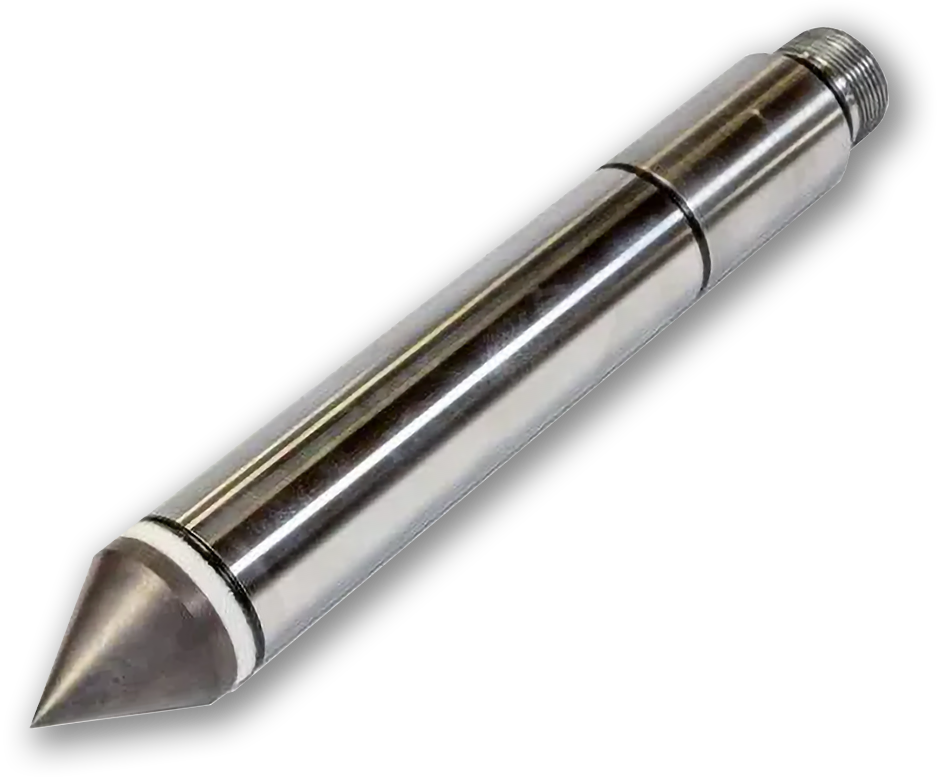CPT – Cone Penetration Testing
Cone Penetration Testing
CPT test primary measurements include tip resistance(qc), sleeve friction(fs), and pore pressure(u). Tip resistance is a measurement of soil bearing capacity, sleeve friction is an indication of the soil cohesive strength commonly seen with clays, and pore pressure is related to the pressure generated as the cone is advanced as well as an indication to the amount of clay in the formation.

Features of NOVA CPT
- Wireless NOVA cone and data transmission technology makes logging quicker and easier!
- The only CPT probe industry-wide that provides a constant stream of real-time data while you’re probing… without a cord downhole. Information collected includes soil resistance on the cone tip, resistance on the outer sides, and pore pressures generated during the test.
- The only wireless data transmission system of its kind
- The operator does not have to manage data cable as the rods are cycled in and out of the sounding hole. Rod handling is efficient, and the risk of cable damage is eliminated.
- Data transmission methods: Acoustic NOVA
- New cone design offers 18-bit resolution with improved strength and gauge measurement accuracy.
- Repeatable penetration results
- Since the rod bore is free and clear, it can be used for lubrication grouting as the rods are pushed into the ground and for retraction grouting (hole sealing) as the rods are pulled. (only available by Acoustic NOVA)
- Can be used with multiple push platforms: drill rigs, cone trucks, Geoprobe® direct push machines.
- Interpret results quickly with user-friendly CPT-PRO software for comprehensive data evaluation. Or by the free DI Viewer.
- Nova cones supplied by Geoprobe adhere to the national standards for construction (ASTM D-5778 Standard Test Method for Performing Electronic Friction Cone and Piezocone Penetration Testing of Soils, as well as ISO 22476-1-11:2004).
The Geotech AB NOVA CPT system has always been unique in the geotechnical industry and is known for its cordless data transmission system: a constant digital stream of data is sent to the surface through the sounding rods. No cable through the rods is needed in the cordless setup. NOVA CPT operates by acoustic cordless function to transmit cone signal to the surface. Cordless CPT can add simplicity to a complex setup or arrangement by not dealing with a cord to add segmented rods into the ground.
Advantages of CPT
- There are many reasons for the widespread use of the CPT test method. Probably the most important is the In-Situ measurement… it measures soil properties in the right environment; in the soil as it is, where it is.
- The real-time, on-site interpretation of logs can be used to better dial in the soil type, water table and soil parameters for engineering design – ultimately saving project cost.
- Additionally, faster production rates when compared to conventional drilling and sampling result in a more cost-effective operation.
SCPT (Seismic)
Seismic Cone Penetration Testing (SCPT) provides a rapid and cost-effective method for directly measuring shear wave velocity of soils in situ, while pushing CPT. Shear wave velocity is used as an index of liquefaction resistance since both are influenced by many of the same factors. Alternatives to using SCPT for these geotechnical analyses can require laboratory testing or less reliable, highly empirical assessments.
SCPT shear wave velocity measurements are used in these evaluations:
- Liquefaction risk
- Earthquake generated ground-surface movements
- Foundations for vibrating equipment
- Behavior of offshore structures due to wave loading
The seismic CPT equipment is used as an add-on to our traditional CPT system. CPT data is taken in the same push that seismic information is generated.
The SCPT probe consists of a seismic section threaded to a standard CPT probe. The CPT probe records tip resistance, sleeve friction, pore pressure, and tilt angle while the seismic section is used to measure the shear wave velocities. The amount of data that is measured is too great for cordless transmission, so the SCPT probe is run with the same data cable used in cabled CPT operation.
Advantages of SCPT
- Rapid, cost-effective method for measuring shear wave velocities
- CPT coupled with a seismic section provides details on soil types, engineering parameters, and shear wave velocity in the same test hole
- Seismic sections are equipped with biaxially mounted geophones which provide a clear acquisition of the generated shear wave while reducing ambient noise.
Vane Shear Test
e vane shear test is an in-situ geotechnical testing method used to estimate the undrained shear strength of fully saturated clays without disturbance. The test is relatively simple, quick, and provides a cost-effective way of estimating the soil shear strength. The results of the vane shear test are not reliable if clay contains silt or sand. Under special condition, the vane shear test can be also carried out in the laboratory on undisturbed soil specimens; however, the use of the vane shear test in in-situ testing is much more common
